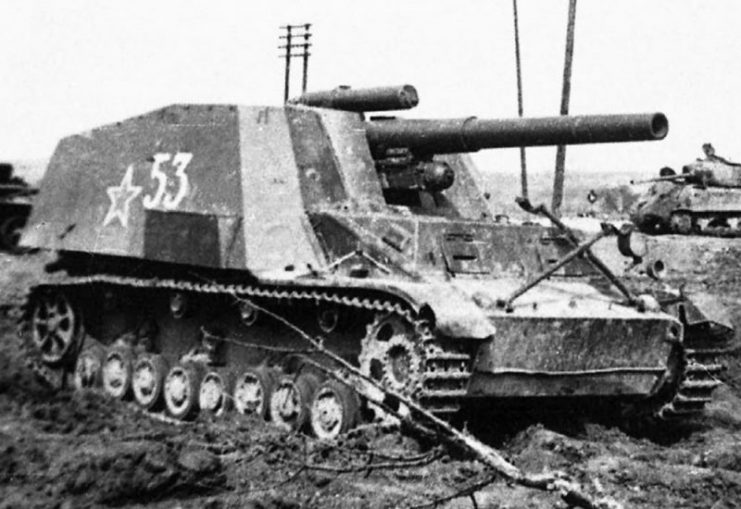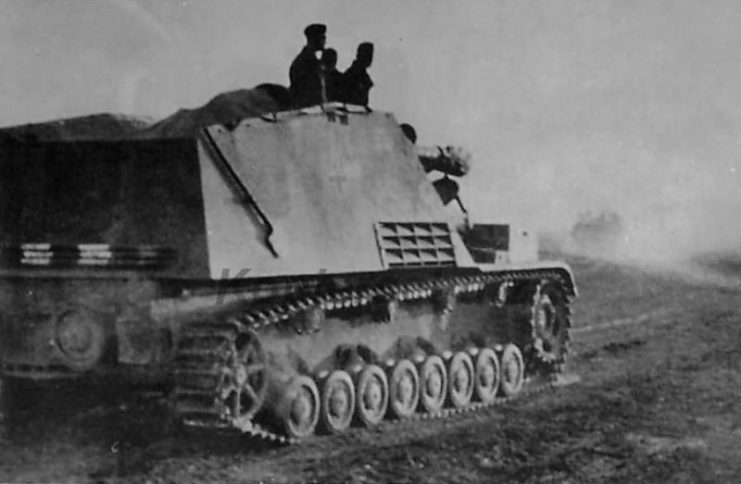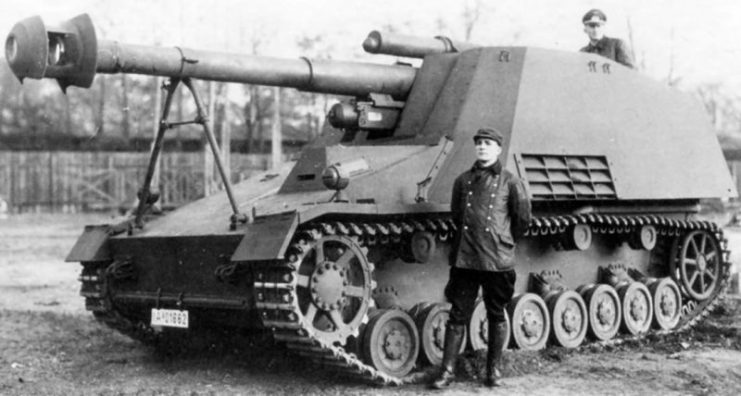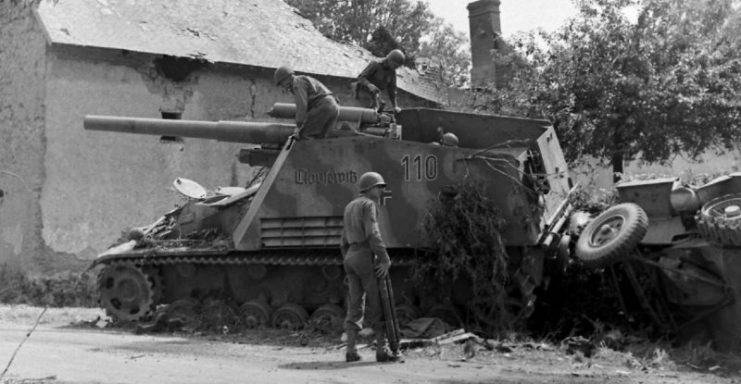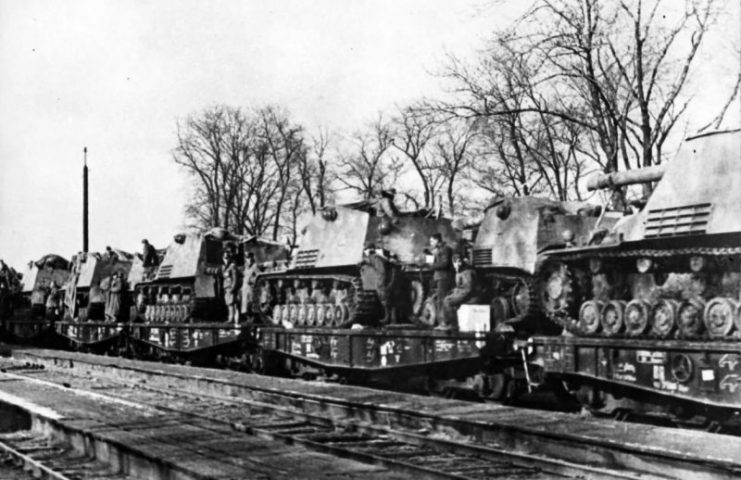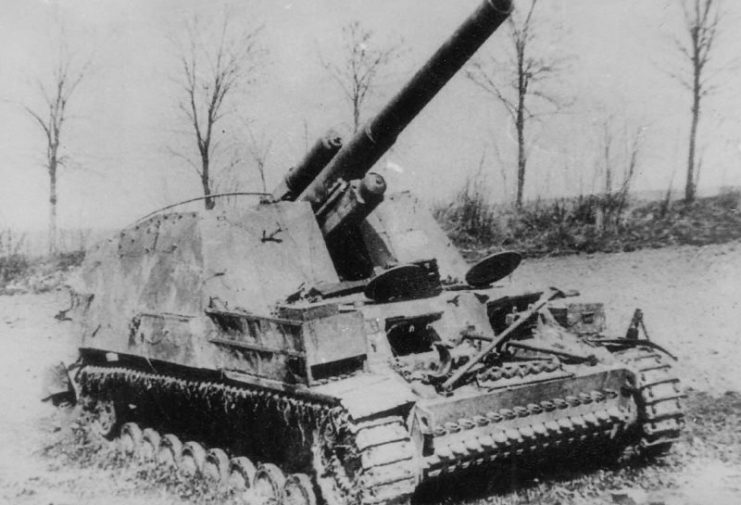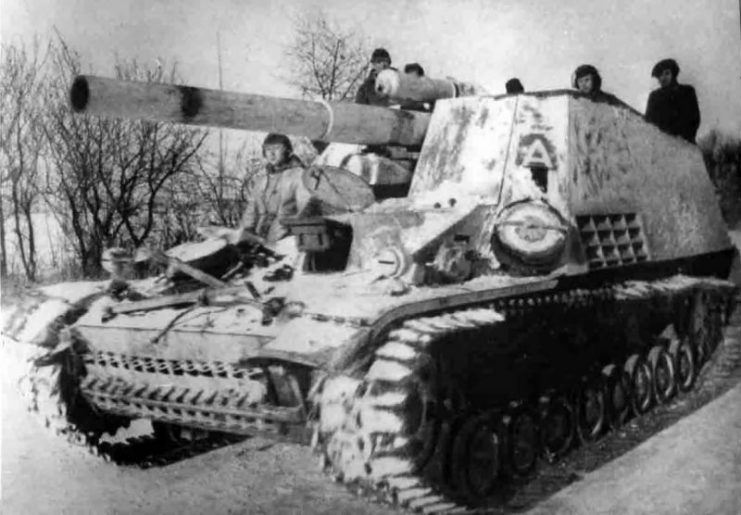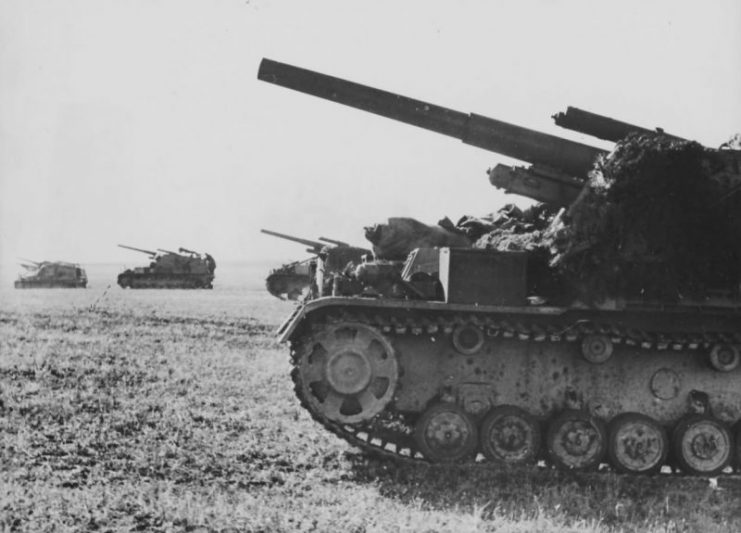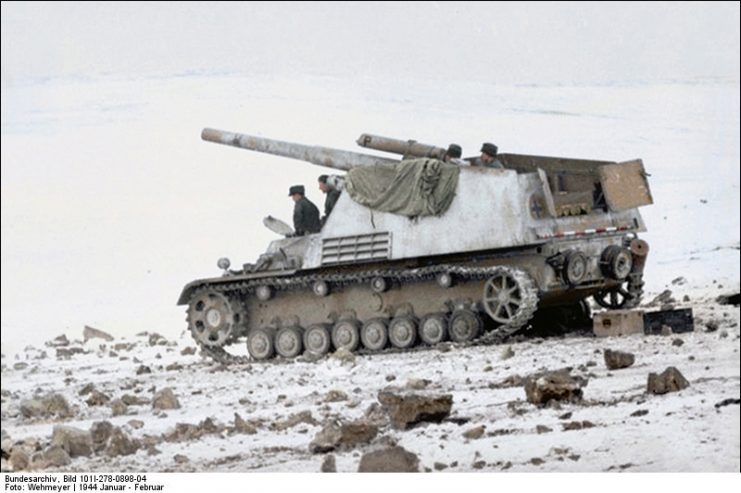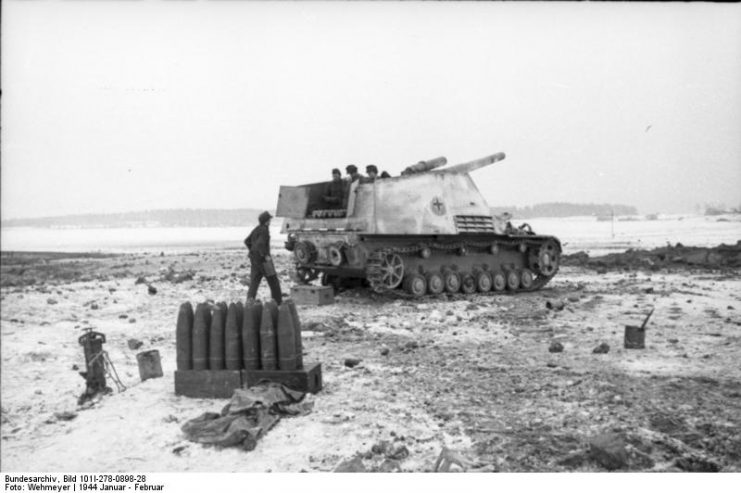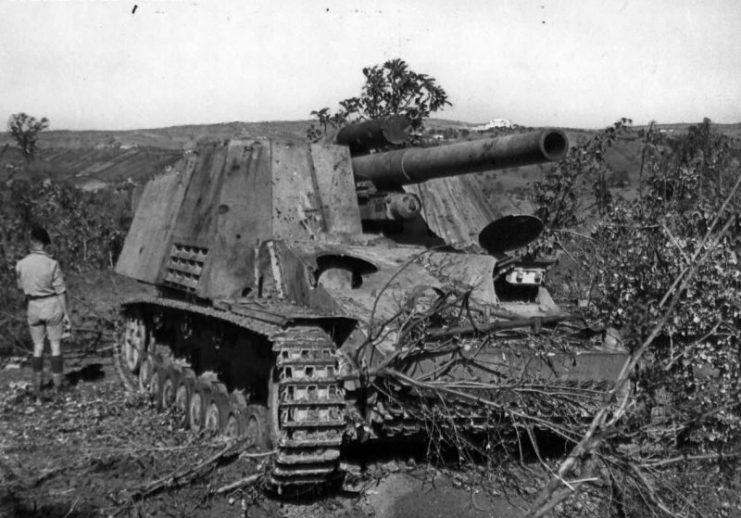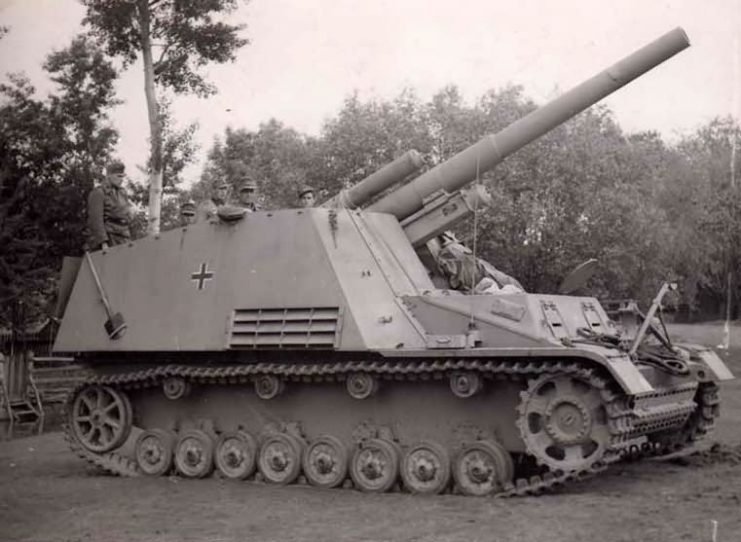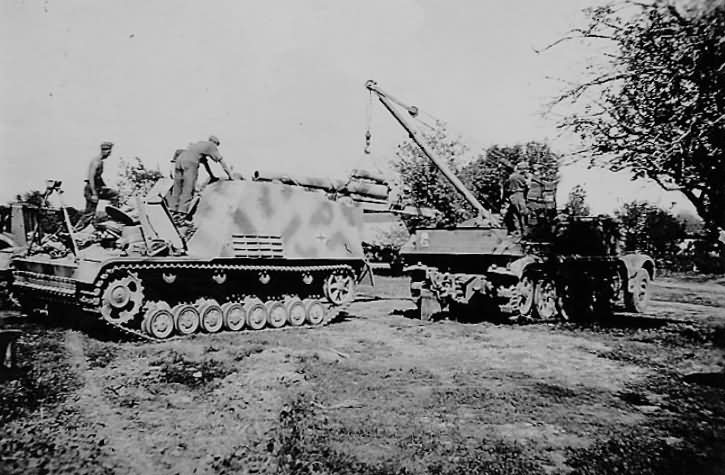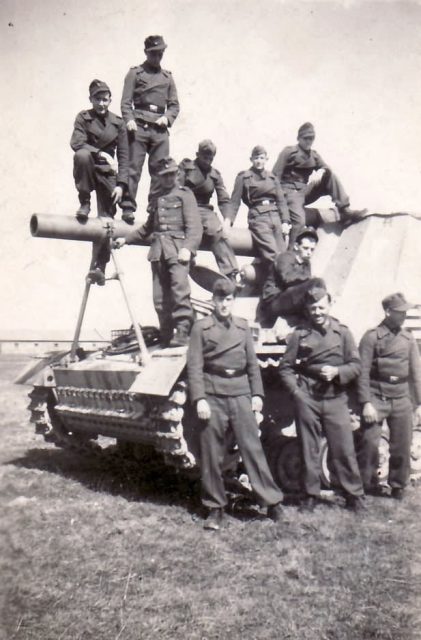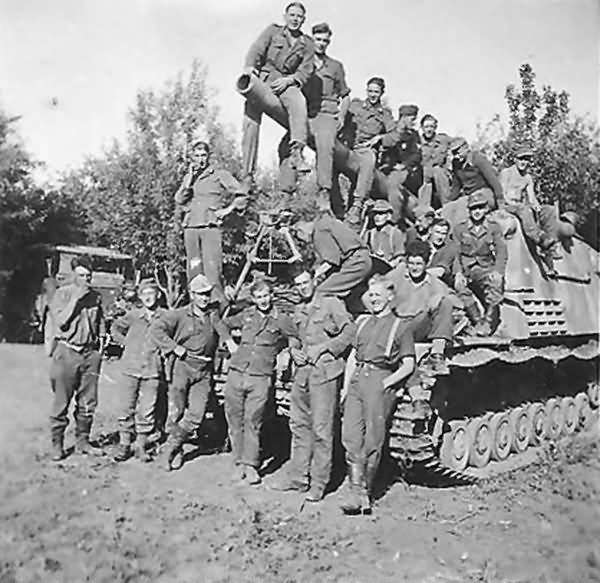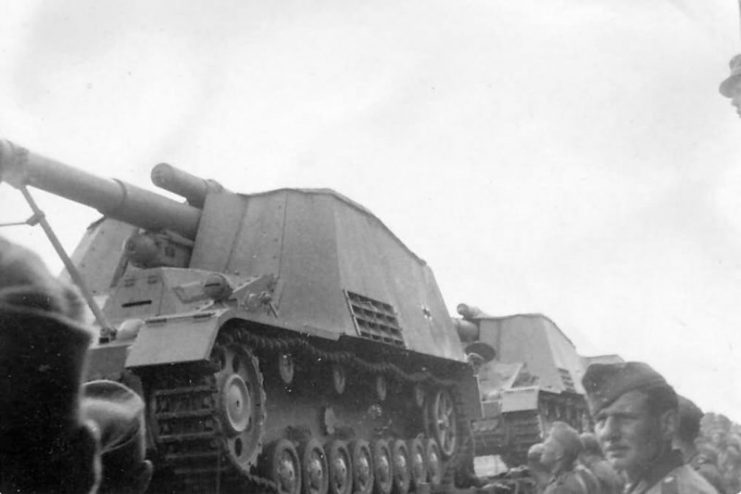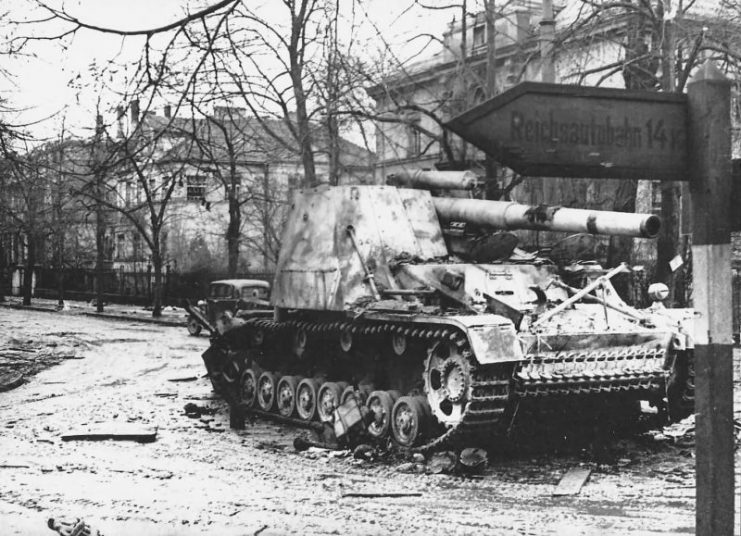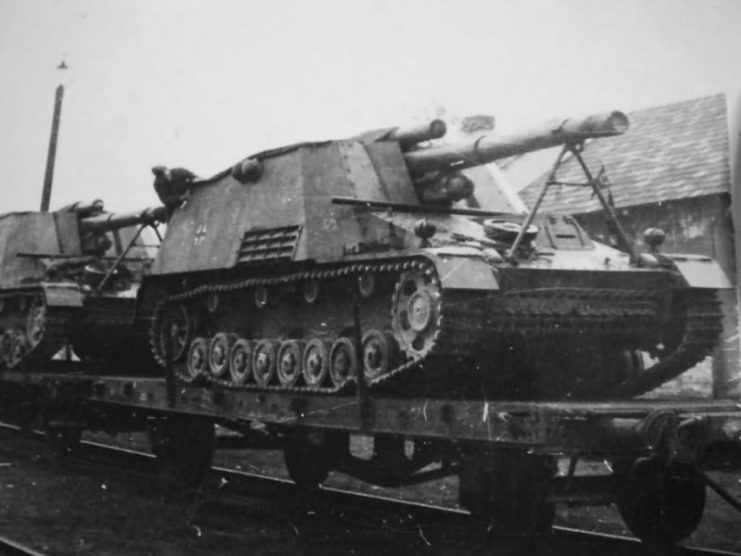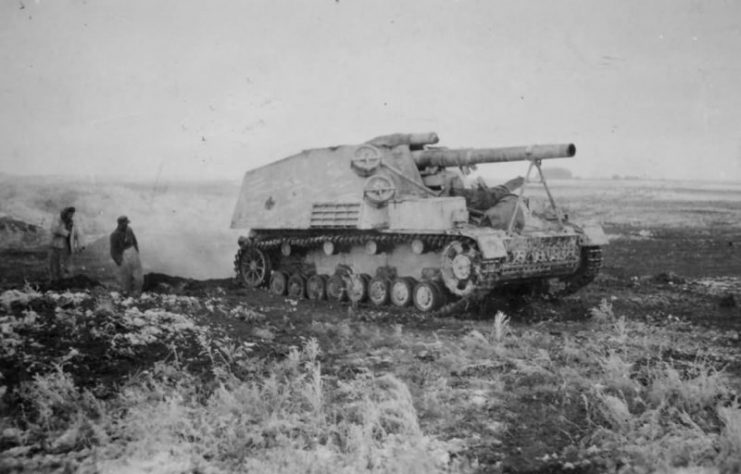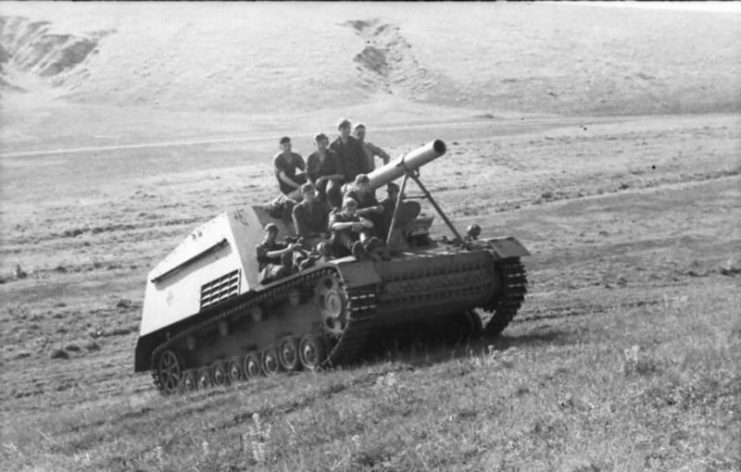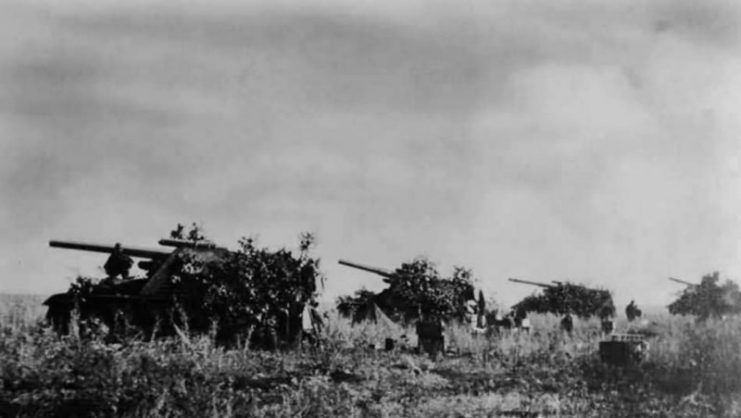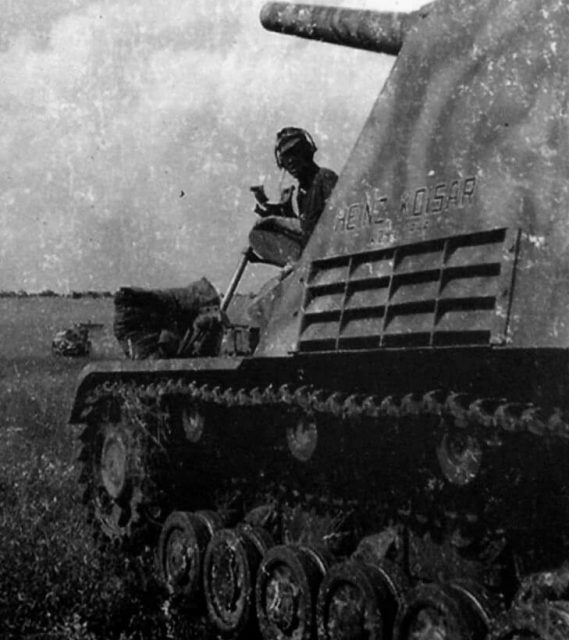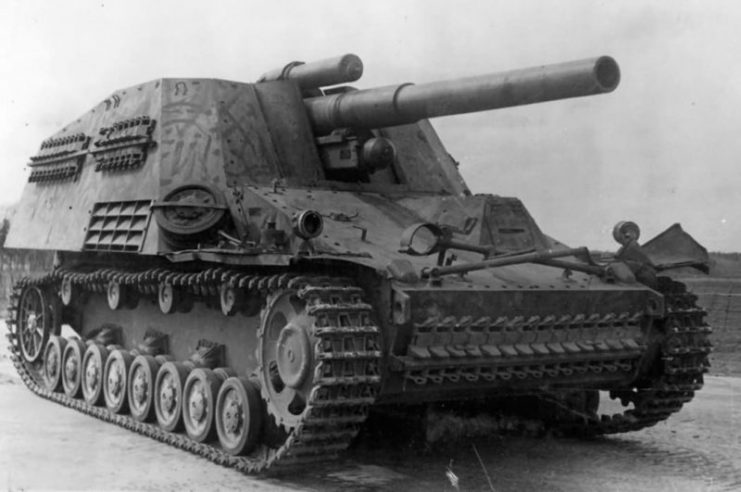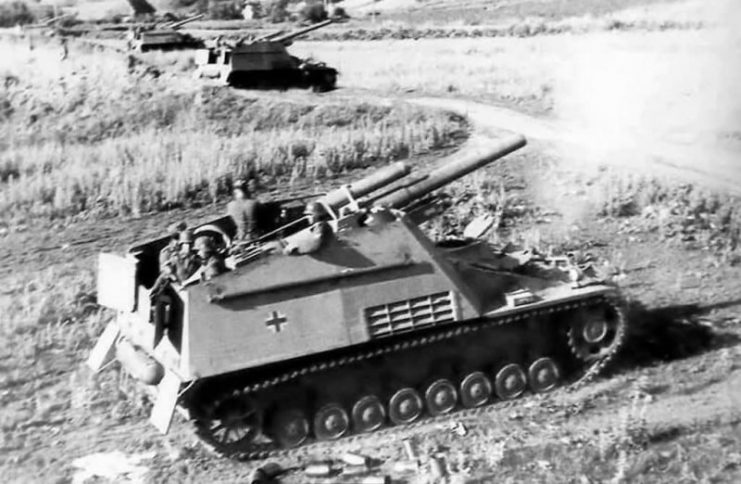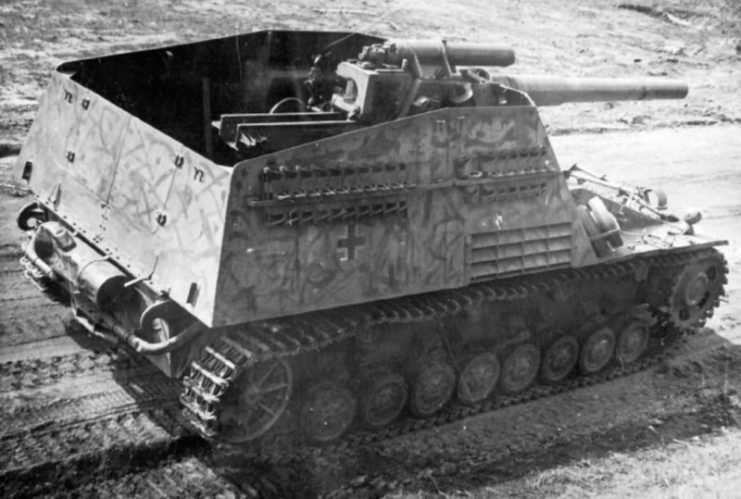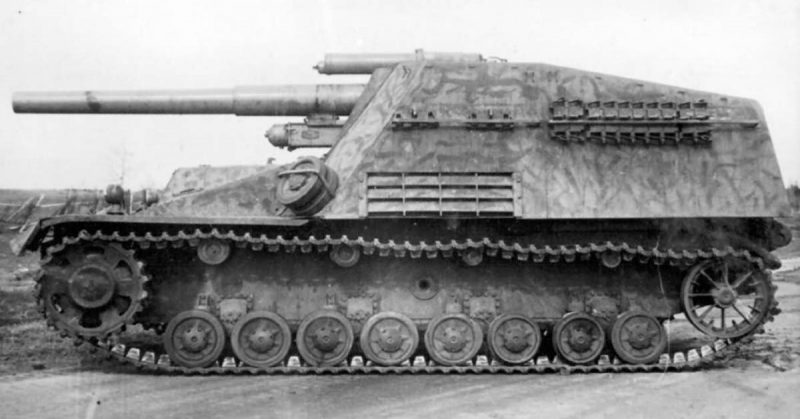Artillery has been called the “King of the Battlefield”. After the initial success of the German offensive against the Soviet Union in 1941, the Wehrmacht high command decided to improve their tactics by applying the lessons learned during the first months of what would become the bloodiest front of the war.
Their attention was directed toward the further development of self-propelled artillery vehicles, capable of providing effective mobile support to advancing tank units during large-scale attacks on enemy positions.
The answer came in early 1943, in the form of a 150 mm howitzer mounted on what was a combination of a Panzer III and a Panzer IV chassis.
The vehicle was designated as Panzerfeldhaubitze 18M auf Geschützwagen III/IV (Sf) Hummel, Sd.Kfz. 165, or Hummel for short, meaning “Bumblebee” in German. The same chassis design would later be used in the production of yet another vehicle – the Nashorn (rhinoceros) tank destroyer.
Regarding the Hummel, Hitler reportedly disliked the nickname as he thought it unsuitable for such a powerful weapon packing so much firepower. But as often happens, the name stuck, despite Führer’s wishes.
While utilizing a fairly thick armor ranging from 10-30 mm, its open-top turret left the Hummel’s cramped six-man crew rather exposed. However, since its role on the battlefield demanded that it stayed in the rear, this wasn’t perceived as a major problem.
Later that year, the Hummel entered mass production. The vehicles practically rolled off the assembly lines and into one of the largest battles of WWII. It was introduced during Operation Citadel, which was the codename for the offensive taking place at Kursk, when 100 units were sent as part of armored artillery battalions.
For the occasion, a variant of the Hummel was produced, specially designed as an ammunition carrier. Six Hummels, plus one carrier were dispatched to various Panzer divisions, as separate heavy self-propelled artillery batteries.
The carrier variant was designed so it could be easily converted into a fighting Hummel by attaching the howitzer, even in field conditions.
However, the Soviet artillery established superiority in the early stage of the Battle of Kursk, and the Hummel was denied the chance to prove its worth. Still, it continued its service on both fronts until the end of the war, with around 714 units produced, together with an additional 150 ammunition carriers. How many of the ammunition carriers were converted remains unknown.
